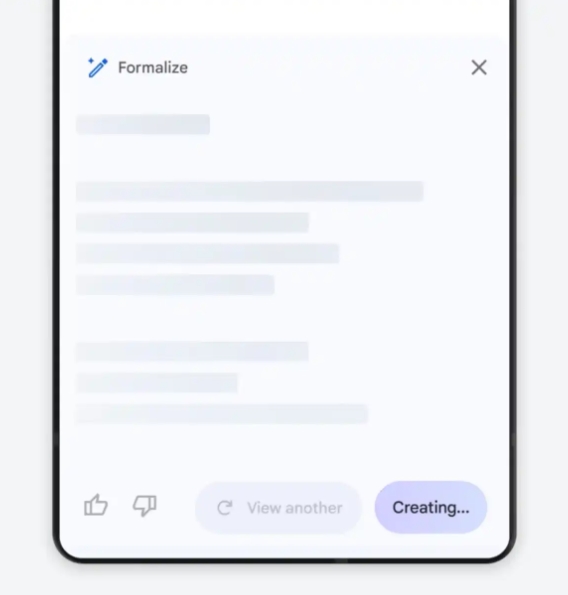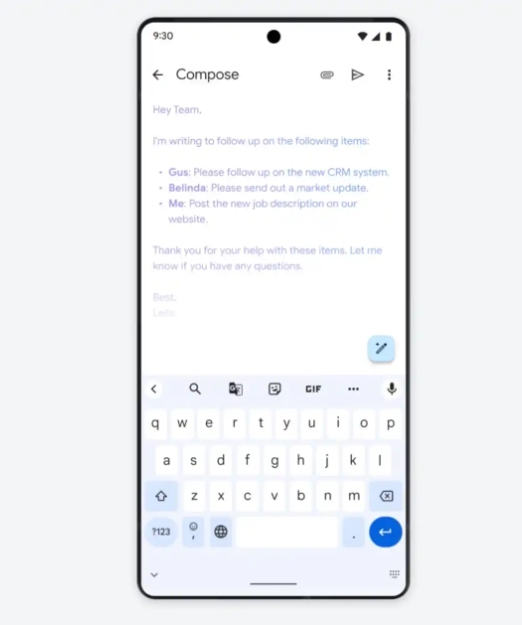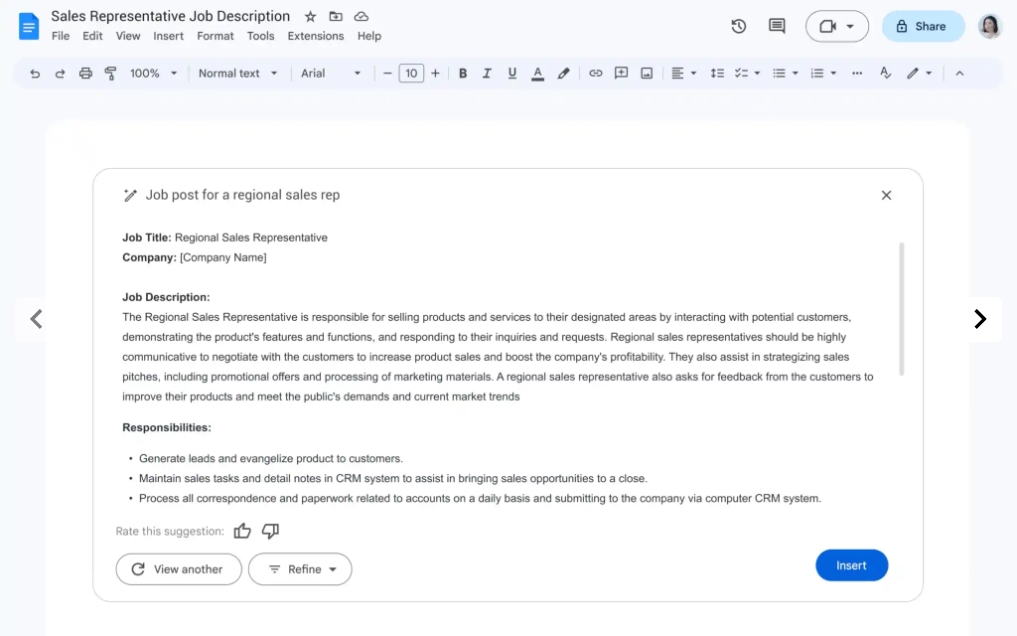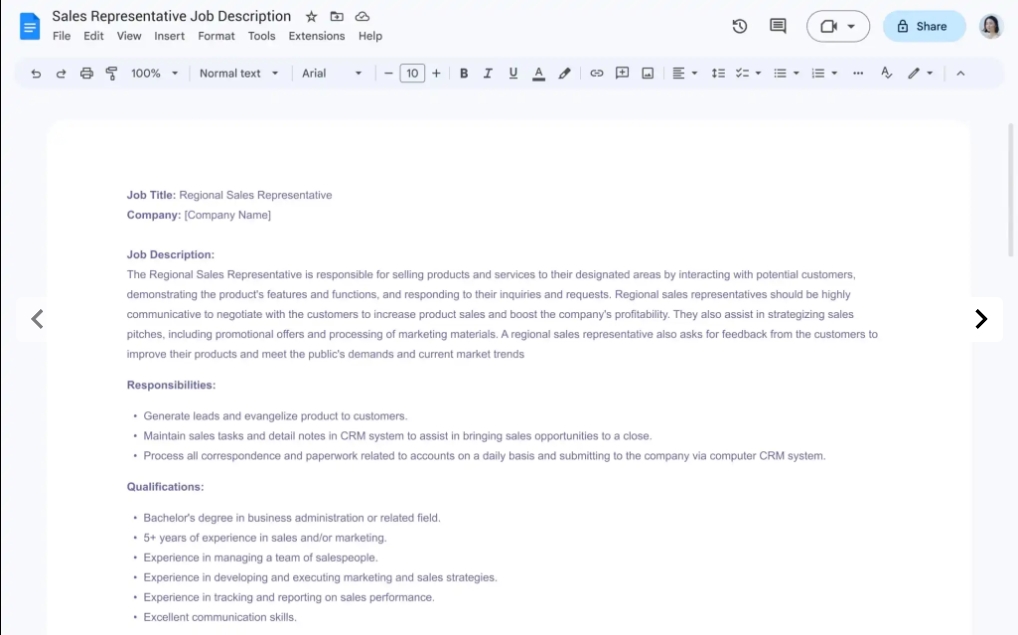❤ Google starts letting the public test generative AI in Gmail and Docs
Google gave an overview of what generative AI features are coming to Workspace apps two weeks ago and is now beginning public testing in Gmail and Docs.
Today’s trusted test program spans consumer, enterprise, and education users (over 18) in the United States. This “small group,” invited to join by Google, must sign up and opt in, with the ability to leave the program at any time.
In Gmail, you can use generative AI to draft everything from a birthday invitation to a job cover letter. Users can also have Google take what they’ve written and make it more elaborate or shorten it, including down to bullet points. There’s also the ability to “Formalize” a message, while Google has shown off a whimsical “I’m feeling lucky” option that adds levity and makes other whimsical stylistic choices (e.g., emoji).
So far, Google has shared what the UI looks like in Gmail for Android, and we’ve spotted it in development. A floating action button (FAB) appears in the bottom-right corner of the Compose screen, revealing the options.
Similarly, AI in Google Docs can make text more detailed or rewrite it to be concise. It can also be used to draft blog posts or even write song lyrics. There will be a “Help me write” button on the web that expands when clicked to reveal a prompt input. Google then generates your request, with users able to thumbs up/down, generate/”View another,” and “Refine.” You can then “Insert” it into your current document and make edits.
Within Gmail and Docs, those enrolled in the test program will be able to submit feedback that Google will use to refine and iterate on the generative AI functionality. This will mark the first time that people outside of Google have access to these Workspace capabilities.
Google will be expanding availability “over time,” with those interested told to monitor a new landing page for opportunities to participate in the future. At the moment, there’s no Bard-esque waitlist to be joined.
The shape and color of Google AI
From what was shared earlier this week in Gmail and Docs, Google Workspace is using a pencil icon with a star in the top-left to brand its generative AI features. (The pencil or pen itself is a generic icon, and already used today in various FABs, like Compose in Gmail.)
So far, we’ve concretely seen it in:
-
Gmail (on mobile): FAB above your keyboard in the bottom-right corner. The sheet that slides up is titled “Help me write,” with Formalize, Elaborate, Shorten, Bulletize, I’m Feeling Lucky, and Write a draft. As the email is created, the gen AI icon remains in the top-left corner with the capability you selected next to it.
-
Google Docs (on desktop): Pill-shaped “Help me write” button with the icon. Tapping expands to a full-width text box to write your prompt.
Besides the icon, and what’s more interesting, is the blueish-purple hue color used throughout. In the Google Docs example, it’s the background of the button and expanded text field. As text is generated, it first appears in that color before switching to black. Similarly, the blue “Create” button turns to “Creating…” with a pulsating background as it’s working. This was also the case in Gmail for Android.
The “new era for AI and Google Workspace” has more examples of this, though the UIs shown here are presumably less finalized than Gmail and Docs. It’s an interesting hue, with this text loading effect being somewhat whimsical, while also masking that generative AI literally needs a second to work.
Previously argued that “Google Assistant” should be how the company brands AI features that users manually invoke. For the initial launch, Google is just associating the generative AI capabilities directly with each product rather than suggesting that a separate AI product/service has been added to Gmail, Docs, etc.
Microsoft is taking the opposite path. After renaming the Office suite to “Microsoft 365” last year, it’s adding “Copilot” (branding that the company has previously used in conjunction with GitHub) to Word, Powerpoint, Excel, Outlook, and Teams. It’s the equivalent of slapping an “AI” sticker on metaphorical software boxes.
Historically, Google has shied away from that flashier approach in its Workspace products. Features like Smart Reply and Compose just stand alone, even as they exist across Gmail, Docs, and Chat. It very much fits how Google names its products very plainly after their main function rather than coming up with a brand.
It remains to be seen which strategy wins out (i.e., attracts more users) for generative AI in productivity apps. Microsoft wants to make a splash and invigorate its (already widely used) tools. Inherently, giving something a name means people know what to call and credit it. Alternatively, it gives users something to blame. (Alas, poor Clippy!)
Meanwhile, Google is going for a somewhat timeless approach by framing the addition of gen AI tools as a continuation of how it iterates products to be helpful. In that sense, generative AI – once it becomes commonplace and widely adopted – could just be an evolution rather than a revolution in the long history of computing.















